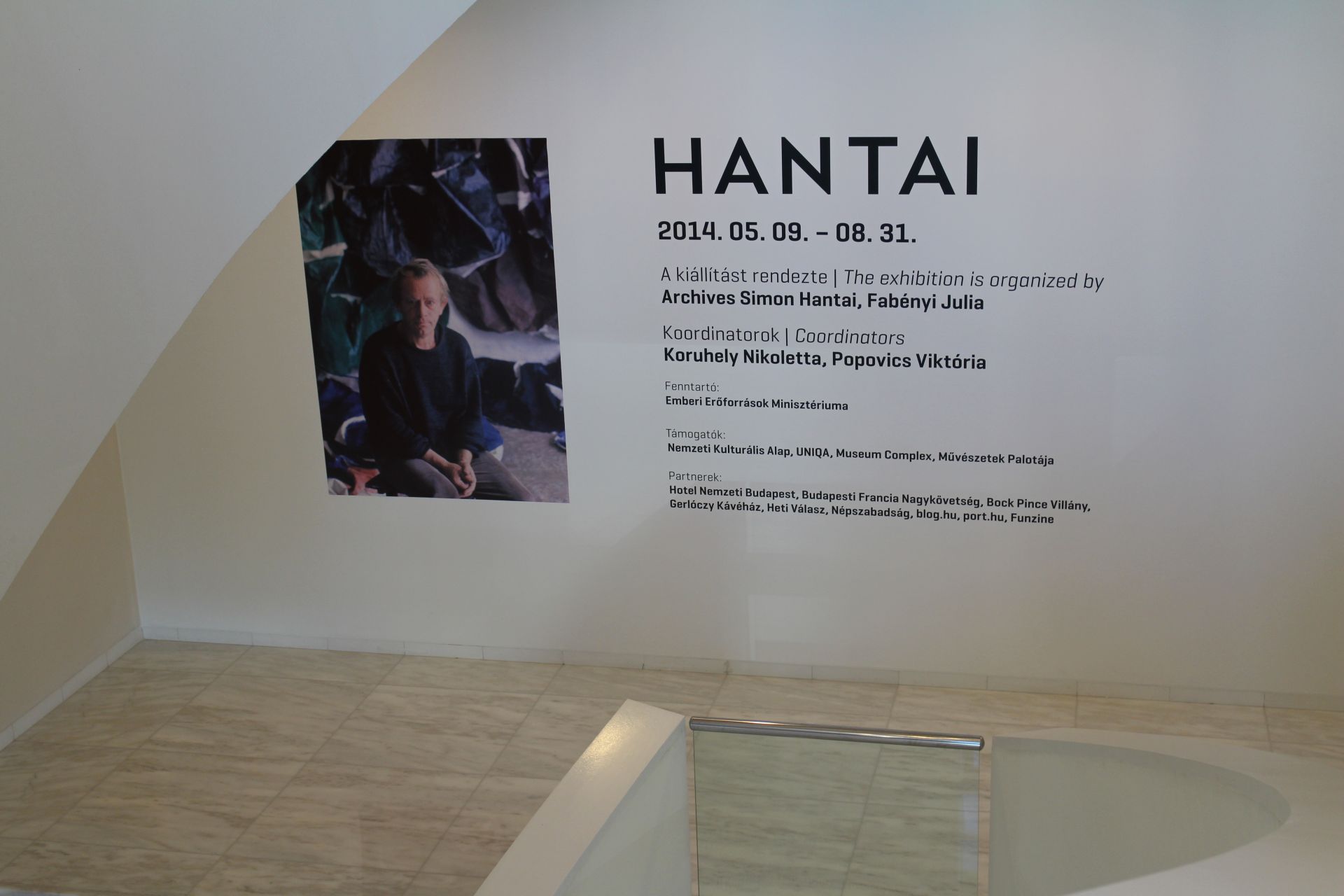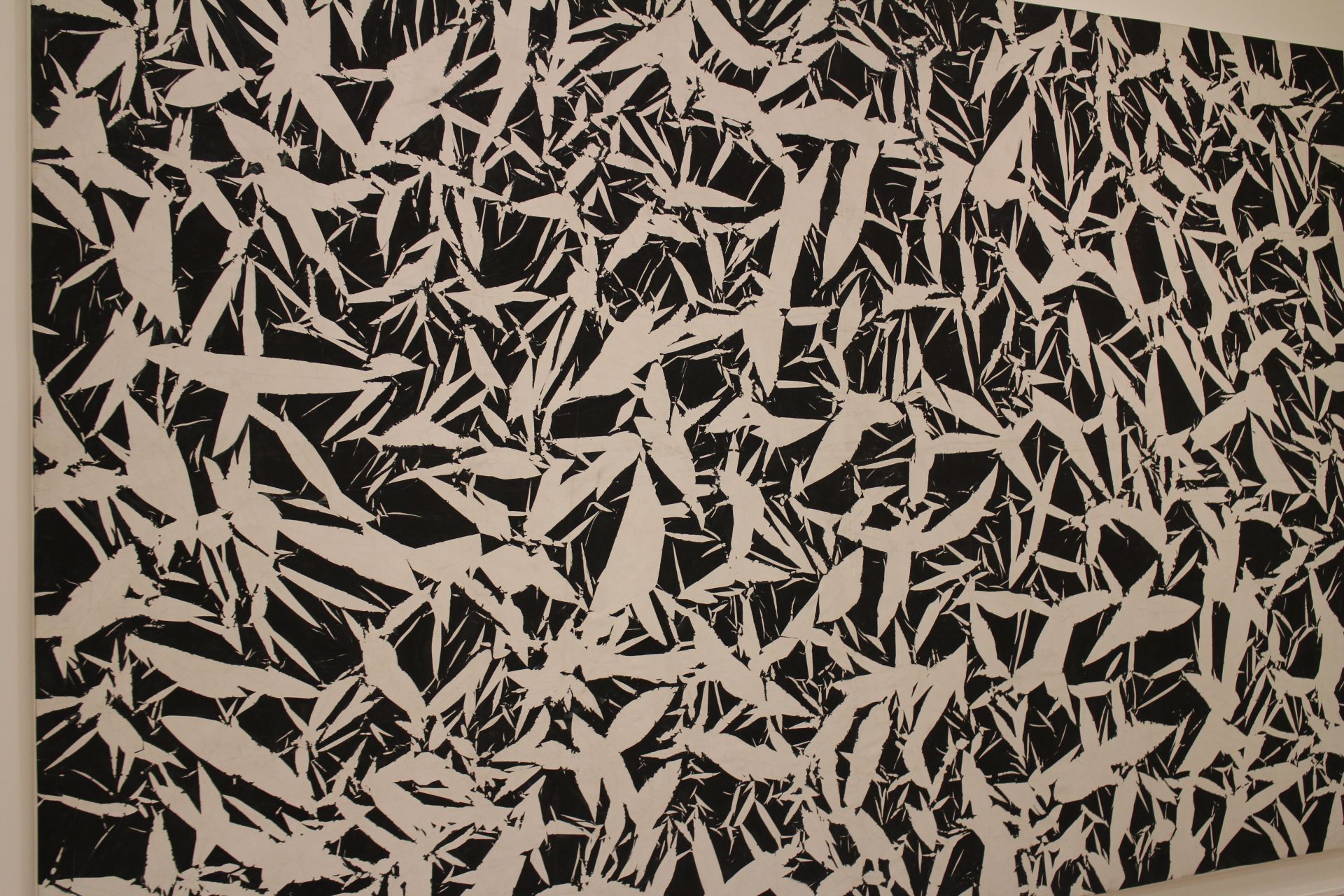
May 9 – August 31, 2014
Ludwig Múzeum
Museum of Contemporary Art
1095 Budapest, Komor Marcell u. 1.
Ludwig Múzeum
Museum of Contemporary Art
1095 Budapest, Komor Marcell u. 1.

First major Hungarian exhibiton of Simon Hantaï
The Ludwig Museum, Museum of Contemporary Art in Budapest is giving the first major exhibition of Simon Hantaï (1922, Biatorbágy, Hungary – 2008, Paris, France) in Hungary between 9 May and 31 August. The large-scale retrospective display represents the key aspects and periods in the oeuvre of the internationally acclaimed artist of Hungarian origin from his early paintings made in Hungary to his final works.
The Ludwig Museum has organized Hantaï´s solo exhibition in collaboration with the artist's family as co-curators. The exhibition was organized in collaboration with the Simon Hantaï Archives. The 67 works on view include a number of previously unknown pieces.
The exhibition was opened by art historian Katalin Keserü, member of MMA and on this occasion a poem was read out by one of the greatest living Hungarian poets, the 86-year-old Ferenc Juhász, a life-long friend of Simon Hantaï.
After studying at the Budapest School of Fine Arts, Simon Hantaï travelled in Italy on foot and moved to France in 1948. André Breton wrote the preface to his first exhibition catalogue in Paris, but in 1955 Hantaï broke with the surrealist group over Breton's refusal to accept any similarity between the surrealist technique of automatic writing and Jackson Pollock's methods of action painting. In the wake of his continuous experiments conducted in parallel with his Surrealist movement his art practice became increasingly gestural. Following the Paris presentation of the New York School, he became inspired by abstract expressionism, and it was above all Jackson Pollock's work that motivated him to turn to gesture painting. In the 1960s he began to develop his own unique technique of image-making (the so-called pliage) by creasing and folding the canvas, then covering it with layers of paint, he created specific abstract patterns on huge surfaces, drawing on the results of the Pollockian free painting as well as on the explorations of light, colour and surface accomplished by French artists. His works created by the method of folding became arranged in consecutive series or sequences of form.
In 1982 Hantaï represented France at the Venice Biennale. At that time he decided to withdraw from public life. His absence from the public art scene, however, did not imply abandoning art and he never stopped painting.
A retrospective of his work was held at the Centre Pompidou in 1976, and in 1982 he represented France at the Venice Biennale.
A Simon Hantaï Retrospective opened at the Centre Pompidou in 2013 with more than 130 works from 1949 to the 1990s.
Signalling the importance of his oeuvre, Hantai´s works are included not only in major Hungarian public collections, such as the Museum of Fine Arts, the Hungarian National Gallery and the Ludwig Museum, all in Budapest, and the Janus Pannonius Museum in Pécs, but also in world-famous international collections, such as the Solomon R. Guggenheim Museum in New York, the Musée National d´Art Moderne and Musée d´Art Moderne de la Ville de Paris, the Vatican Museum in Rome, the Musée d´Art Contemporain in Nice, Christie´s in London, and Galerie Jean Fournier in Paris, as well as in Hungarian, American, Italian, Belgian and French private collections.
The exhibition was opened by art historian Katalin Keserü, member of MMA and on this occasion a poem was read out by one of the greatest living Hungarian poets, the 86-year-old Ferenc Juhász, a life-long friend of Simon Hantaï.
After studying at the Budapest School of Fine Arts, Simon Hantaï travelled in Italy on foot and moved to France in 1948. André Breton wrote the preface to his first exhibition catalogue in Paris, but in 1955 Hantaï broke with the surrealist group over Breton's refusal to accept any similarity between the surrealist technique of automatic writing and Jackson Pollock's methods of action painting. In the wake of his continuous experiments conducted in parallel with his Surrealist movement his art practice became increasingly gestural. Following the Paris presentation of the New York School, he became inspired by abstract expressionism, and it was above all Jackson Pollock's work that motivated him to turn to gesture painting. In the 1960s he began to develop his own unique technique of image-making (the so-called pliage) by creasing and folding the canvas, then covering it with layers of paint, he created specific abstract patterns on huge surfaces, drawing on the results of the Pollockian free painting as well as on the explorations of light, colour and surface accomplished by French artists. His works created by the method of folding became arranged in consecutive series or sequences of form.
In 1982 Hantaï represented France at the Venice Biennale. At that time he decided to withdraw from public life. His absence from the public art scene, however, did not imply abandoning art and he never stopped painting.
A retrospective of his work was held at the Centre Pompidou in 1976, and in 1982 he represented France at the Venice Biennale.
A Simon Hantaï Retrospective opened at the Centre Pompidou in 2013 with more than 130 works from 1949 to the 1990s.
Signalling the importance of his oeuvre, Hantai´s works are included not only in major Hungarian public collections, such as the Museum of Fine Arts, the Hungarian National Gallery and the Ludwig Museum, all in Budapest, and the Janus Pannonius Museum in Pécs, but also in world-famous international collections, such as the Solomon R. Guggenheim Museum in New York, the Musée National d´Art Moderne and Musée d´Art Moderne de la Ville de Paris, the Vatican Museum in Rome, the Musée d´Art Contemporain in Nice, Christie´s in London, and Galerie Jean Fournier in Paris, as well as in Hungarian, American, Italian, Belgian and French private collections.















